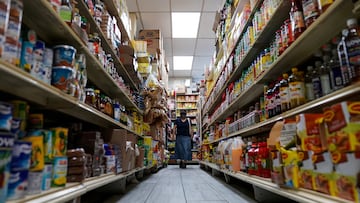Inflation is on the rise: here’s why prices are increasing for groceries and other products
Americans are feeling the squeeze as new tariffs drive up import costs and push grocery and everyday prices even higher.

Grocery bills are climbing again, gas prices are creeping higher, and American families are starting to feel the pinch. Inflation is back on the rise.
Inflation from January through August averaged 2.65%, but for hard-working Americans facing rising costs, the major concern is that it’s climbing again — up from 2.3% in April to 2.9% in August.
What’s behind the rise in inflation?
One of the main factors driving prices higher is the tariff policy implemented by President Donald Trump, which has increased the cost of imported goods.
What’s worrying is that, as of June, companies were passing on only 22% of those higher costs to consumers, according to analysis by Goldman Sachs. If the current tariffs remain in place, however, that share is expected to rise to 67%, pushing prices up even further.
How we got to today’s inflation situation
During Joe Biden’s presidency, inflation surged to a four-decade high following the pandemic, driven by global supply chain disruptions, energy shocks, and record levels of federal stimulus spending. By mid-2023, inflation had eased significantly as the Federal Reserve raised interest rates to their highest level in two decades, cooling demand and stabilizing prices.
While today’s rate remains well below the 9% peak reached in mid-2022, the recent uptick has raised concerns that inflation could become sticky again. Economists say the combination of slower growth, persistent wage pressures, and new trade tariffs under Trump has reignited inflation worries across key sectors like food, housing, and transportation.
What this means for consumers
So far, the biggest price jumps have been in groceries, household goods, and car insurance, according to Labor Department data. Economists warn that everyday essentials could keep climbing through the fall if tariffs and supply bottlenecks persist.
Energy prices are also starting to edge higher again after months of relative stability, adding more strain to household budgets already stretched by rising rent and childcare costs.
What the Federal Reserve might do next
The Federal Reserve is closely monitoring the inflation trend and could delay expected interest rate cuts if price growth continues through the end of the year. That could mean higher borrowing costs for credit cards, mortgages, and car loans remain in place for longer than many households anticipated.
Americans are paying more
For now, Americans are paying more at the checkout line, and the road back to stable prices looks longer than expected. The coming months will test whether the government can contain costs without slowing down the broader U.S. economy.
Related stories
Get your game on! Whether you’re into NFL touchdowns, NBA buzzer-beaters, world-class soccer goals, or MLB home runs, our app has it all.
Dive into live coverage, expert insights, breaking news, exclusive videos, and more – plus, stay updated on the latest in current affairs and entertainment. Download now for all-access coverage, right at your fingertips – anytime, anywhere.
Complete your personal details to comment